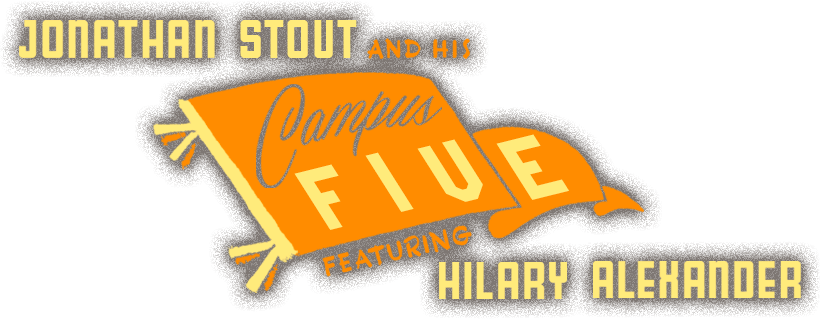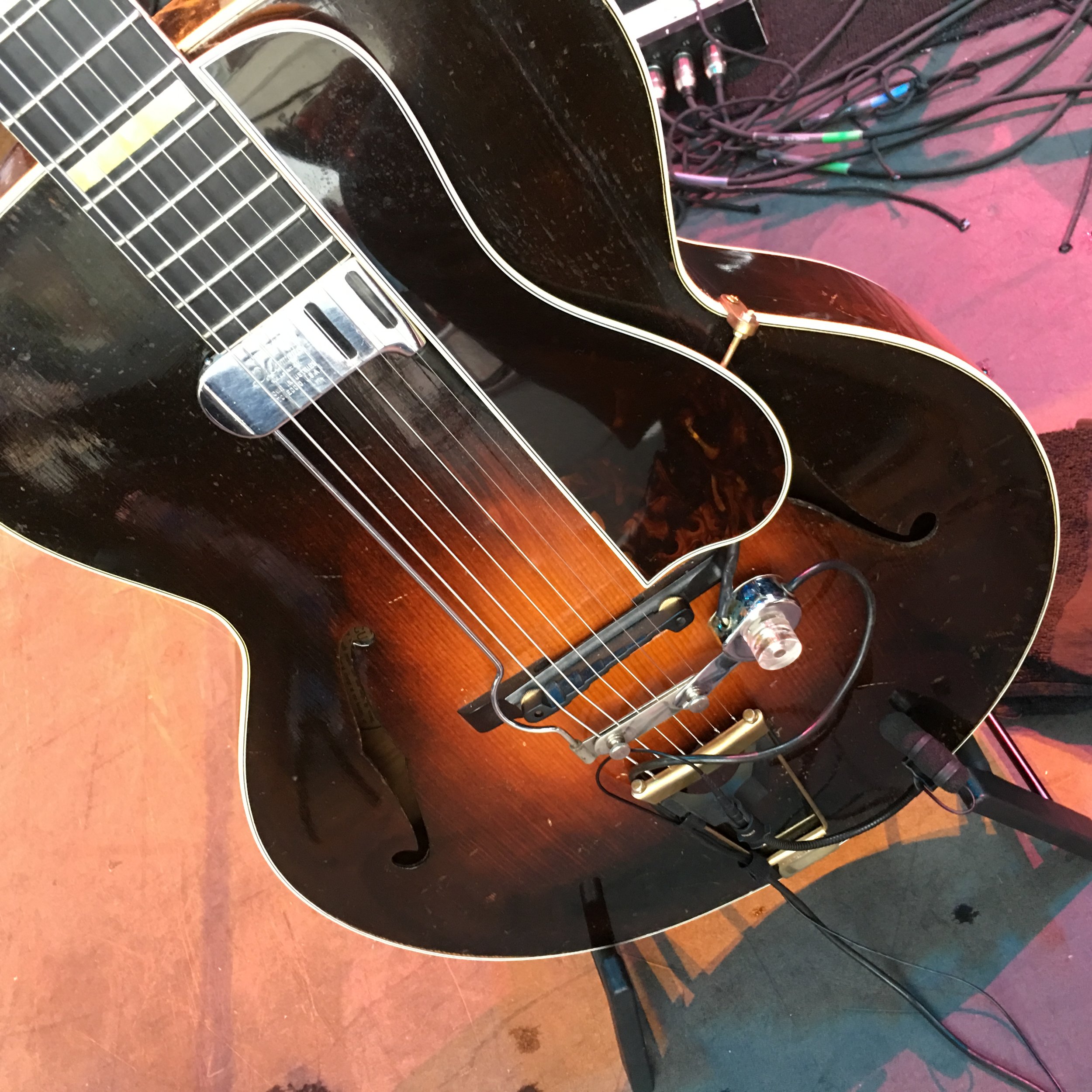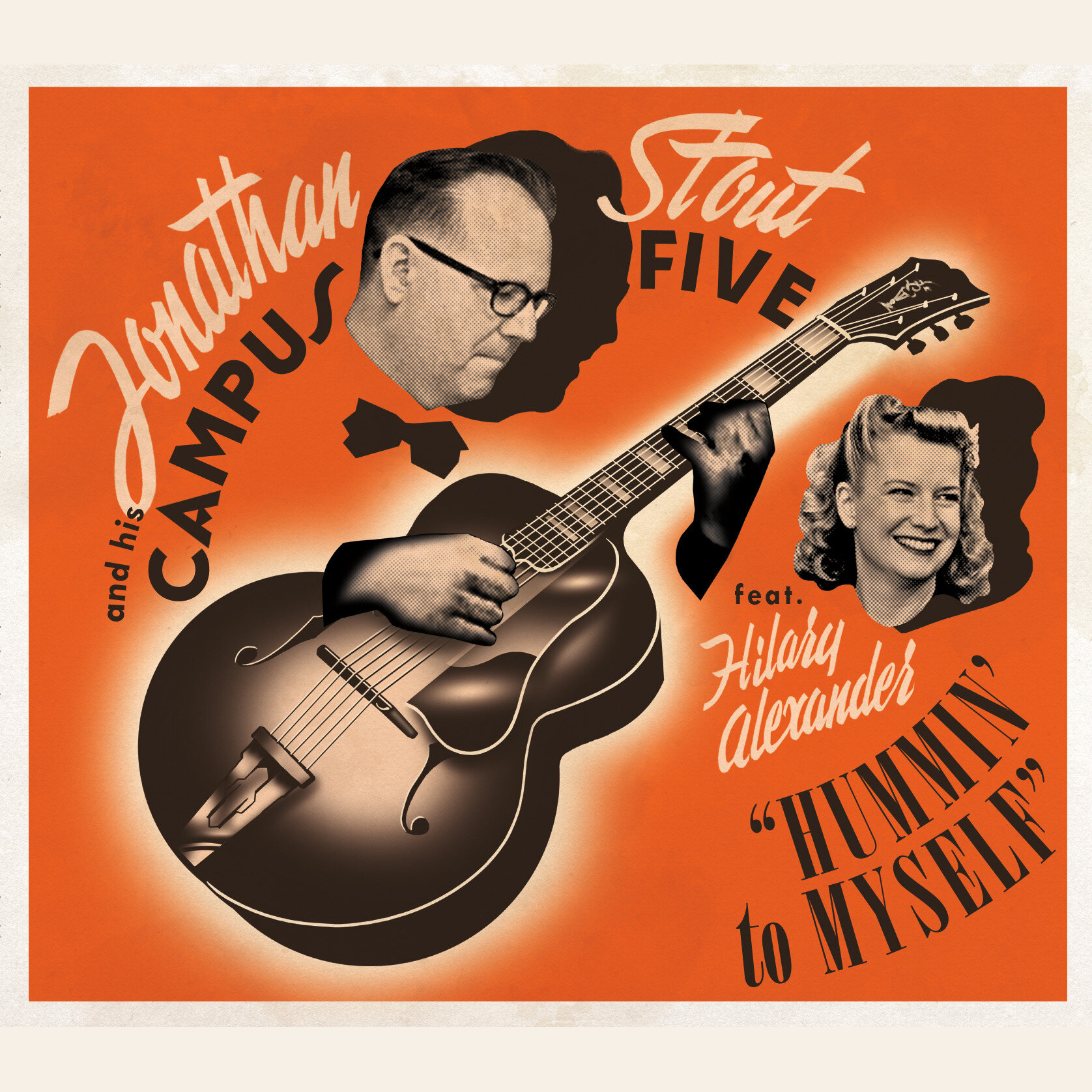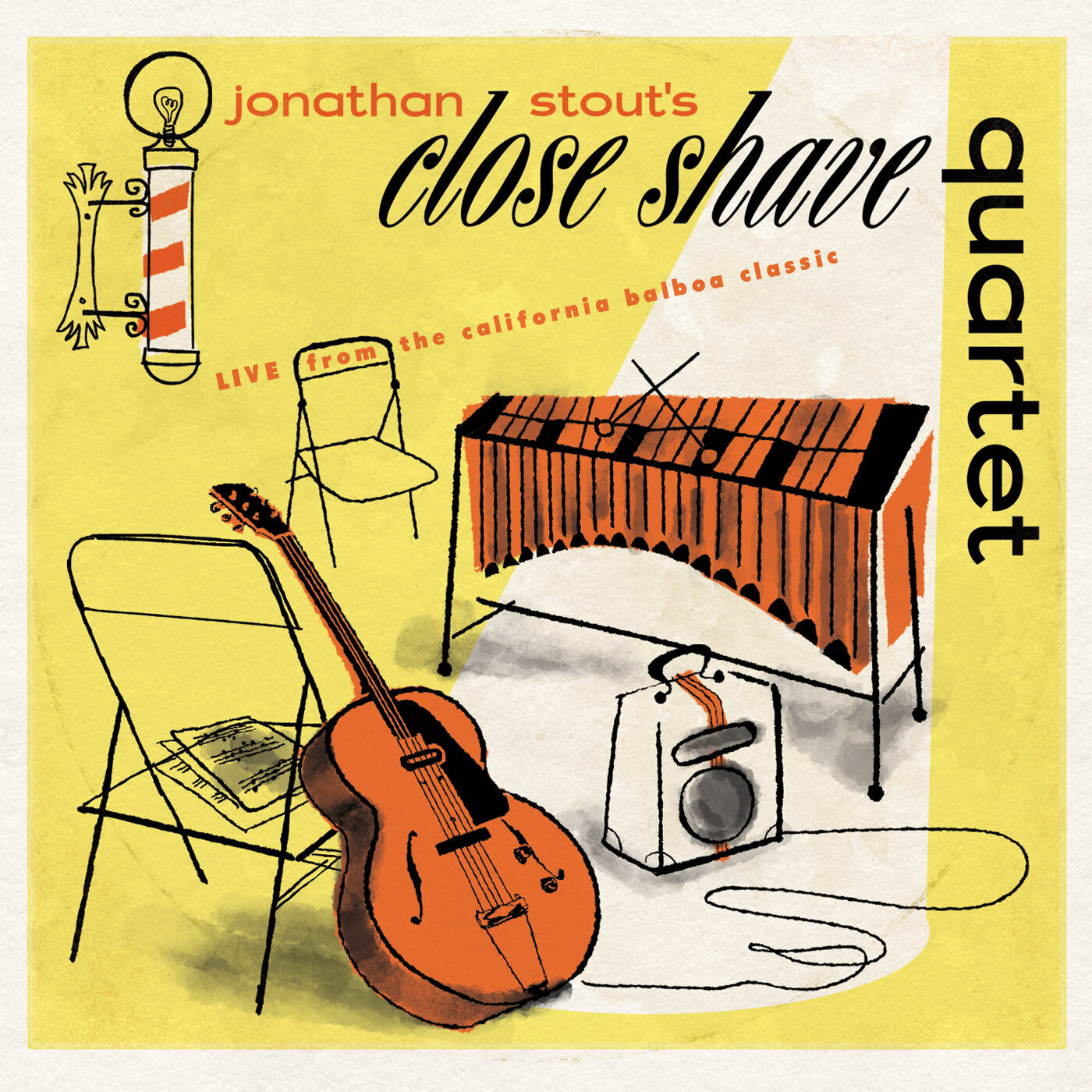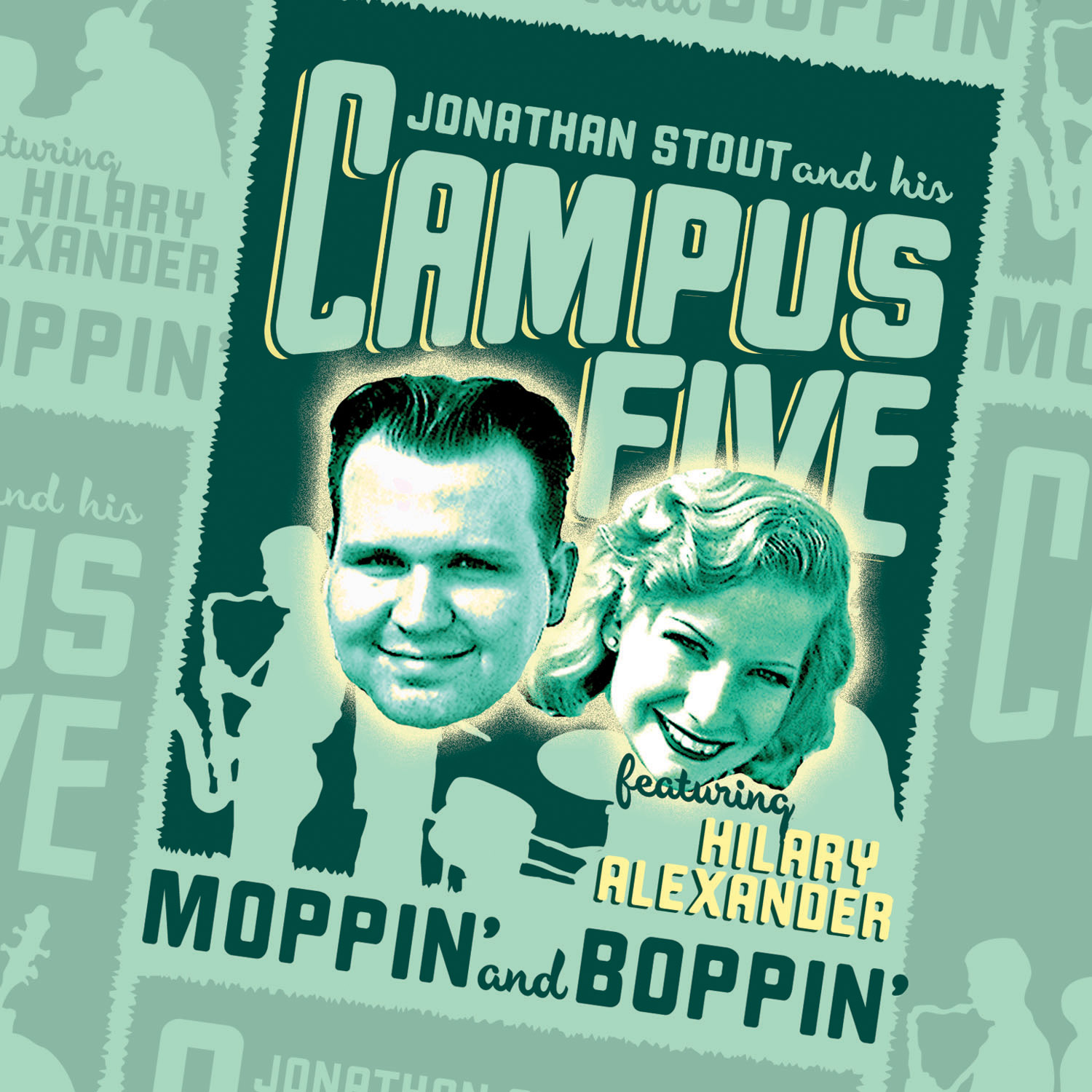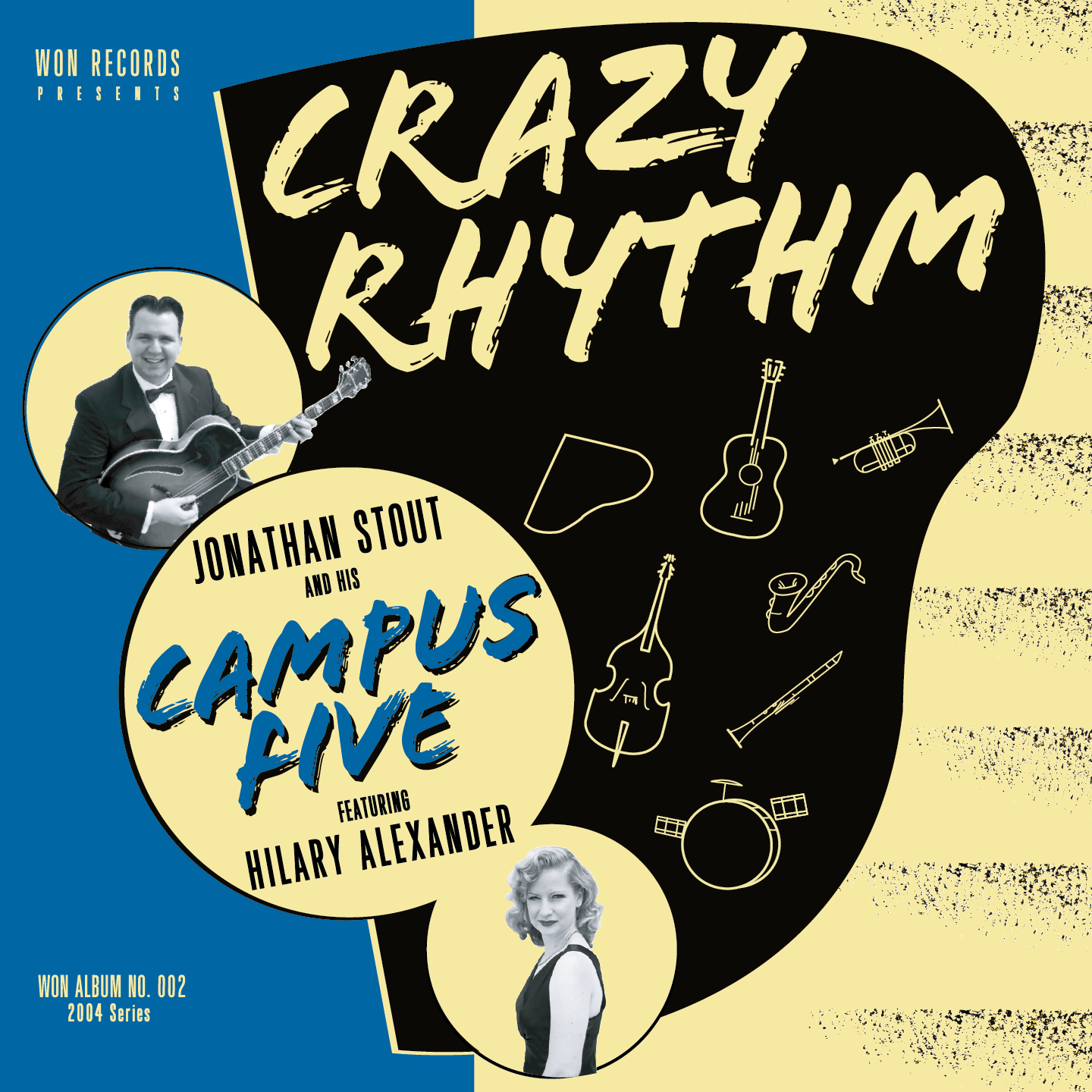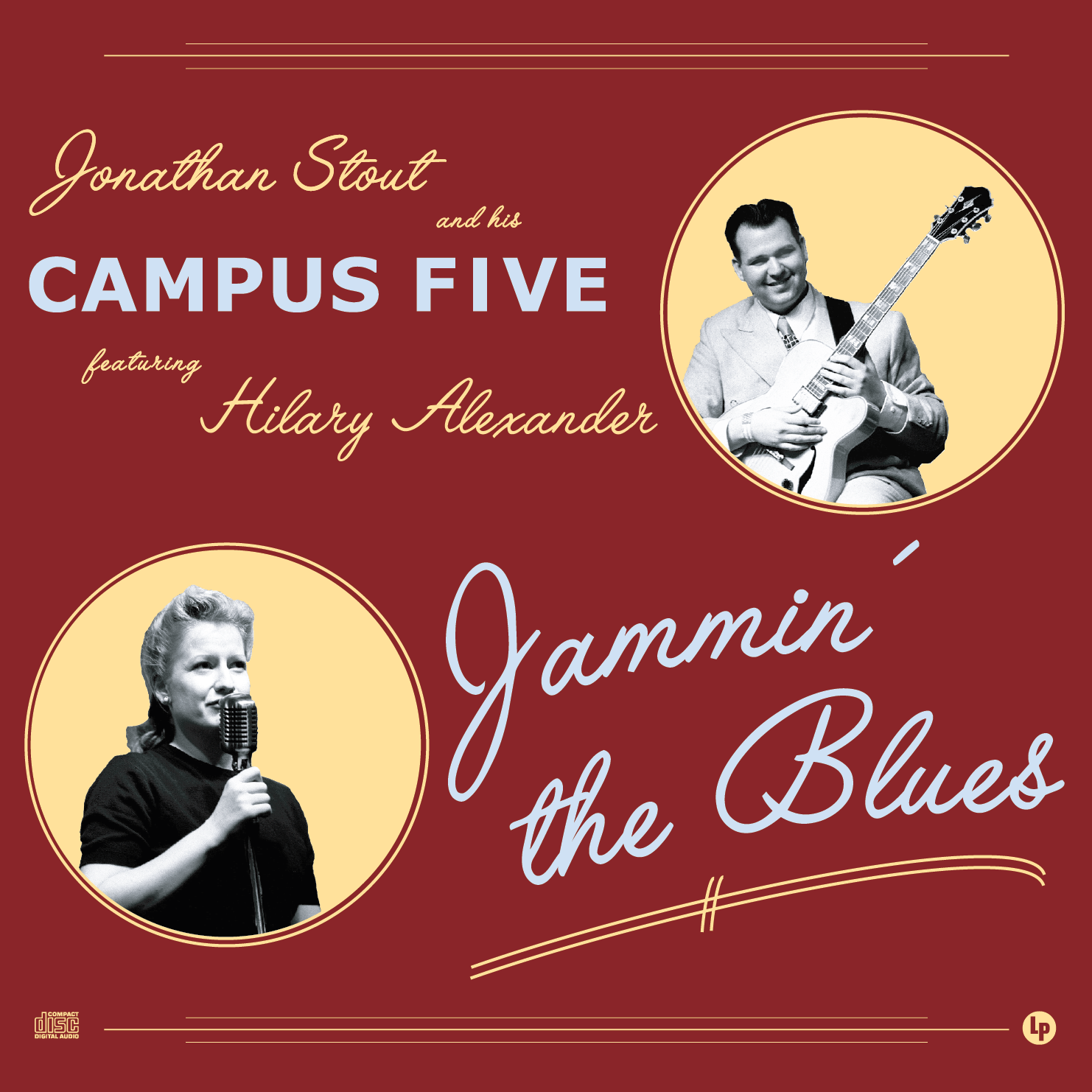Rig Rundown 2017
/Since my last post about switching to a Lavalier-style mic back in 2014, I’ve done probably 150 gigs, and my gear situation has gone in a couple interesting directions. I hope that my discoveries help you all in dealing with the ever present challenge of amplifying pre-bebop Swing guitar.
Guitars
I used to bring several guitars to each Campus Five gig - to make each gig a bit of a “sampler” of classic guitar sounds. While most of the material calls for acoustic swing rhythm guitar, plus some electric and acoustic solos, I would switch to a Selmer-style for when we played a tune like “Dark Eyes” or “Minor Swing”.
But a couple of years ago, we started separate bands that specialize in different “flavors” of Swing (“Les Boulevardiers” for Django, “Rhythmbusters” for 20’s-30’s, etc.), so there was less need to include those other sounds in our main band, the “Campus Five”. Since most of our gigs are with our main band, I now mostly just bring an acoustic archtop and an electric archtop. Plus, and this an oddly cosmetic point, but believe it or not, the different guitars help people understand the identity and branding of each individual band, which is a legitimate problem when one bandleader has six bands.
So on most Campus Five or Jonathan Stout Orchestra, I use both my ’32 Gibson L-5, or my ’37 ES-150. For the occasional gigs where I can only bring one guitar, I’ll bring the L-5 and put a 5-’s DeArmond Guitar Mike (aka Guitar Mic or FHC). Thankfully, the positioning of the DeArmond and it’s “monkey-on-a-stick” mount, allows the guitar top to vibrate freely, so the guitar is still performs acoustically. Although it seems like it might be a lot of hardware attached to the guitar, I can easily use my DeArmond and the clip-on mic rig at the same time, so I can easily play acoustic rhythm, mute the acoustic with a footswitch, and roll up the DeArmond’s volume knob and take an electric solo, without changing guitars.
1932 L-5 with both a DeArmond Guitar Mic magnetic pickup AND a DPA4099C microphone
Another angle to show the positioning of the DPA4099 and the DeArmond Guitar Mic
For Django-gigs, I’ll bring my LeVoi. For gigs with the Rhythmbusters (our 20’s-30’s band), or for un-amplified outdoor gigs, I’ll bring my National Style 1 Tricone.
Family photo....
Acoustic Amplification
Since 2014, I’ve been using a clip-on, gooseneck mounted lavalier microphone exclusively to amplify all of my acoustic instruments (archtop, seamer-style, resonator, whatever). I started with the Audio Technica 831b as I detailed in 2014, but switched to the fancier DPA4099 and I use the Cello mount to attach it to the tailpiece or the strings between the tailpiece and bridge. Besides sounding even better, the DPA4099 this is a vast improvement over the “clip-on” mount of the AT831b/AT8414 combination, which although it works great, it did end up scratching the top of my L-5, which was heartbreaking. That said, I still think the AT831b/AT8414 combo is still a great one, provided one pays attention, and adds some padding.
Close up of the DPA4099 C Mounted on my L-5
There are two essential considerations that make a clip-on lavalier mic feasible: 1) a “mute switch” to easily turn the mic on and off, and 2) thoughtful speaker geometry to avoid feedback.
Mute Switch / Channel Switching
As I talked about in 2014, I was using a Rolls MS111 passive mute switch. It’s cheap, easy and it works. That said, I upgraded to the Whirlwind MicMutePX, which is ACTIVE, so it prevents any popping, and it provides phantom power - which the DPA requires (the AT831b has it’s own battery pack, so it can live without phantom). The MicMutePX also has an indicator light, which makes it far more obvious if the mic is hot or not.
If I’m running into a PA system instead of my own acoustic amp, I will often also use an A/B box to alternate between two channels, with one set for a rhythm volume level, and the other boosted for lead. I had been using the Radial ABo box, but it is passive, so it occasionally caused some popping when switching, and it had no indicator light, so it was occasionally possible to loose track of which channel was which. I’ve since upgraded to the ProCo Panic Button, which is active, so popping is minimized and there IS an indicator light.
My full channel switching rig on stage at Lincoln Center
Acoustic Amp
If I’m not going to go directly in the PA system, I’ll plug into an AER Compact 60. It’s super portable, rather loud, and it sounds great. It’s not by accident that AER Compact 60's are basically the gold standard among most gypsy jazz folks. Even when I am going into the PA, I can plug into the AER, use it as a personal monitor, and use the DI out on the amp out to the board. I’ve never tried to use both channels of it, but I suppose that would probably work great with the Panic Button/MicMute set up.
Bonus points for the included carrying case. It protects the amp, provides storage for the power cable and maybe one or two others, and the shoulder strap makes carrying the amp easy.
Electric Amps
I've been lucky to have had to opportunity to play an original 1939 Gibson EH-185 for the last 10 years. To quote Ferris Bueller, "If you have the means, I highly recommend picking one up." Although it has required a fair amount of maintenance over the years, it's been surprisingly rugged for something built 78 years ago.
But, over the last couple years I've been using a new amp on at least half of my gigs: a Vintage '47 VA-185G. Vintage '47 specializes in replicas of octal-tube based Valco amps from the late 40's/early 50's, and I've been recommending them for years as (one of) the closest thing(s) available to the amps of the Swing-era and immediate post-war period. There are any number of quality replicas/reissues of the 9-pin based (like a 12AX7) Tweed Fender Amps of the mid- to late-50's, but such Tweed amps have too much fidelity and fail to get the same tone as the Octal-tube amps.
Vintage '47 VA-185G on stage
I've used their Ric Style amps several times, and they sound great (one borrowed from Mike Faltsek, one purchased by Michael Gamble for Lindy Focus and recording the last Rhythm Serenaders record). While not exactly modeled after a 30's Gibson, they are next closest thing, and I've gotten proper Charlie Christian-type tone out of them with no problem.
But two years, ago came out with the VA-185G. While not a strict reproduction of the Gibson EH-185, it was a modification of the Ric-Style circuit to bring it closer in tone to a real EH-185. I've been using one pretty consistently for the last two years
Stage Geometry
A typical evening stage set up - L-5 with DeArmond and DPA, with the VA-185G mic'd up, and a floor wedge running parallel to the neck of the guitar, so that it is off-axis to the DPA.
Whenever you're using a sensitive condenser microphone on stage, proper stage geometry is crucial to prevent feedback. Making sure that any stage monitor or amp (carrying the acoustic guitar signal) is "off-axis" to the microphone is probably the most important thing you can do to avoid feedback.
I avoid having any monitor in front of me, because the top of the guitar will just reflect that sound source into the microphone (which is pointed down at the top). The best placement is to have a floor monitor aiming the sound parallel to your strings (so that it's 90° to the microphone), and have the monitor angled up directly at your ears, rather than lower at the guitar body. That placement is ideal because it allows you to hear the guitar the most directly (which allows you to keep the monitor level relatively low and still hear it) and avoid the source bleeding into the mic.
If the gig doesn't have monitors, but there IS a PA, I will often bring my AER acoustic to use a monitor, and run the DI out of it into the PA. The AER is mountable on a mic stand, so it's possible to raise it right up as a "personal monitor". While I've never done that for myself, I have done that to give a piano player a monitor, and he love it.
Here's a VERY rudimentary stage plot drawing:
Here's a handwritten stage plot (excuse my terrible penmanship)
Now, when I'm a sideman and I can't plug into a PA, I use the AER Compact 60. I place it behind me on my left, which allows my body to act as a buffer between the mic and the amp. You'll never be able to get as much volume before feedback when the amp is behind you, compared to the side-monitor strategy, but I still find it very workable.
And well, there's more, but I want to put this up before months go by with it incomplete.
